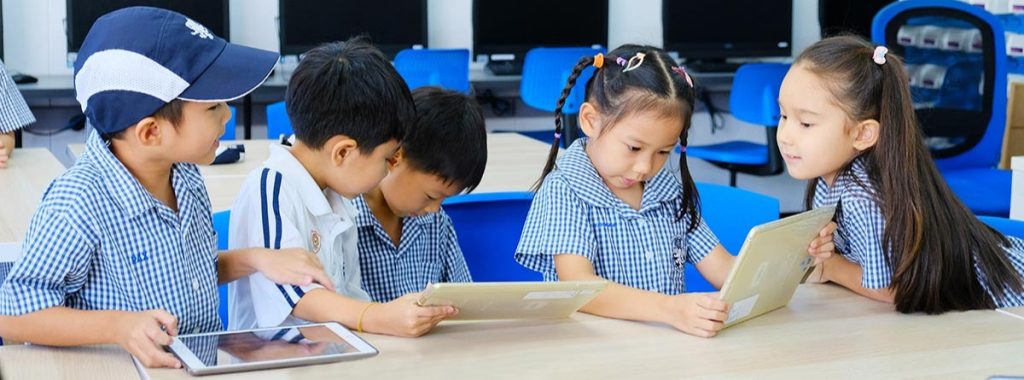Two years ago, a ‘prompt engineer’ was someone who could be relied upon to complete a project on time. Today, the AI start up Anthropic pays a salary of up to $375,000 USD for a prompt engineer to build a library of instructions for its Claude model. The emergence of such specialised and lucrative new roles within a span of just a few years exemplifies a broader challenge: accurately anticipating the skills needed in the future job market is becoming harder than ever as the rise and reach of AI advances at breakneck speed.
AI is already changing the nature of work and will transform aspects of it beyond recognition in the next five years. Goldman Sachs economists Joseph Briggs and Devesh Kodnani argue that AI tech could expose the equivalent of 300 million full-time jobs to automation. Whilst the report claims that automation does not necessarily equate to layoffs, as AI will often augment rather than replace jobs, PwC’s 2024 Annual Global CEO Survey cautions that a quarter of CEOs are expecting to reduce headcount by at least 5% in 2024 due to generative AI. Cuts have already been announced at IBM, BT Group, Citigroup and Klarna, and it’s AI wielding the knife.

Job elimination, augmentation and creation
New technology has always led to the elimination of low-complexity, repetitive jobs, from switchboard operators to film projectionists. What is striking this time is the impact at pace of AI on many aspects of high-complexity jobs too. Advances in telecommunications and personal computing were at least tempered by cumbersome infrastructure requirements – banks of phones and PCs couldn’t be installed in every business overnight – but powerful AI platforms are already in the hands of everyone, from seasoned C-suite exec to fresh-faced intern, and will only get better.
Towards the top of the list of those occupations with greatest exposure to generative AI models, according to a 2023 paper by Felten, Raj and Seamans and the World Economic Forum’s Jobs of Tomorrow (2023) report, are a host of highly-paid, high-complexity roles: post-secondary teachers, HR specialists, judges, clinical psychologists, management analysts, architects, engineers and software developers. These jobs will not vanish completely but they will change radically, with AI handling or augmenting much of the daily grind. If scanning your own groceries at a self-service checkout once seemed futuristic, prepare to speak to a therapist bot, assess your company’s efficiency using an AI analyst, and design your home office with the help of an automated architect.
AI is eliminating and transforming current jobs. It is also creating new occupations, from prompt engineer to data curator, interface designer to ethics specialist. These roles offer some consolation in the face of large job losses predicted in worst-case scenarios; however, they also add to the sense of bewilderment felt by young people today. With well-established jobs facing elimination, others being augmented significantly, and new careers and industries springing up seemingly overnight, how can schools cultivate in their students the skills to study, work and thrive in the AI Age?
We, Robots: Humans and AI Together
In spite of the coming disruption to the labour market, the essential skills identified by reports from bodies like the UK’s NFER and the World Economic Forum have remained unchanged for years: collaboration, communication, creative and critical thinking take the top spots – as they did at least as far back as 2007, when they were packaged as the ‘Four Cs’ of 21st century learning. No one could argue against the importance of such skills, but education can articulate what they might look like for 2030 and beyond.
It is tempting, but mistaken in my view, to separate skills into permanent, mutually exclusive ‘human’ and ‘AI’ categories and direct students to master the former. Instead, skills are better conceived as lying on overlapping webs: AI models may be more proficient in some skills and humans in others right now, but many skills – and certainly the four identified above – will be best realised by humans and AI working together as co-workers or classmates, learning from each other’s strengths and weaknesses. Ethan Mollick’s Co-Intelligence: Living and Working with AI (2024) outlines this argument especially convincingly.
With this in mind, we could support our pupils in navigating the uncertain years ahead by bringing AI into the teaching of essential skills in our classrooms. Developing collaboration might involve teachers designing activities that require the use of an AI model as a member of a team, with students assigning it responsibilities and tasks that they cannot complete alone. Using AI to rewrite original work for different audiences – press releases, research papers, exam-style essays, etc. – would expand pupils’ communication skills considerably, as would building their own collection of effective subject-specific prompts for their AI of choice. Creativity – long thought the preserve of humans alone – has the potential to be enhanced dramatically through AI, not only through the creation of images (Midjourney, DALLE-3), code (Devin), music (Suno, Udio) and video (OpenAI’s coming release of Sora) but also through idea generation, which AI excels at in quantity if not always in quality. And AI can provide limitless questions, counter-arguments, and extension material, strengthening students’ critical thinking further.

Using AI in this way would not only build pupils’ familiarity with current models but also demonstrate the power of expertise. Spend enough time with an AI and you quickly realise its limitations – its overuse of certain words and phrases, its training data bias, its tendency to hallucinate (invent information) rather than admit ignorance. Evaluating AI outputs requires a level of expertise in a subject area: you can only spot errors in a ChatGPT essay on Macbeth and Banquo’s relationship if you have a good understanding of the Scottish Play overall. Fears of over-reliance on AI and a plague of plagiarism are well-founded but can be partly alleviated by guiding pupils through appropriate use of AI models, and showing the value of deep subject knowledge. The alternative, as many of us will have already seen, is that students use AI out of sight, badly, with little or no awareness of its limitations.
Preparing for this new technological frontier means bringing AI into both the formal and skills curriculum, so that students are exposed to its enormous benefits and sizeable shortcomings at appropriate ages and stages, and with expert oversight. This is no easy task, requiring us as teachers to upskill ourselves quickly and stay abreast of continual developments in the field. But the need is urgent. At last year’s World Economic Forum’s Growth Summit, economist Richard Baldwin put it starkly: ‘AI won’t take your job – it’s someone using AI who will take your job’. AI in the classroom is frightening. It’s also necessary.
As we navigate the future of education in the AI age, it’s important to equip students with the right skills to thrive. Explore the tools, resources, and trusted providers that can help shape a new era of learning and teaching. Find innovative solutions for schools and educators on AISL Mall today.
References
- Briggs, J. and Kodnani, D. (2023) The Potentially Large Effects of Artificial Intelligence on Economic Growth. Goldman Sachs. Available at: https://www.gspublishing.com/content/research/en/reports/2023/03/27/d64e052b-0f6e-45d7-967b-d7be35fabd16.html (Accessed: 13 April 2024)
- Dickerson, A., Rossi, G., Bocock, L., Hilary, J. and Simcock, D. (2023). An analysis of the demand for skills in the labour market in 2035. Working Paper 3. Slough: NFER.
- Felten, E.W., Raj, M. and Seamans, R. (2023) ‘Occupational Heterogeneity in Exposure to Generative AI.’ SSRN Electronic Journal. Available at: https://doi.org/10.2139/ssrn.4414065 (Accessed: 13 April 2024)
- Mollick, E. (2024). Co-intelligence: Living and Working with AI. London: Penguin
- PwC (2024). PwC’s 27th Annual Global CEO Survey. Available at: https://www.pwc.com/gx/en/ceo-survey/2024/download/27th-ceo-survey.pdf (Accessed: 13 April 2024)
- World Economic Forum (2023). The Future of Jobs Report 2023. Available at: https://www3.weforum.org/docs/WEF_Future_of_Jobs_2023.pdf (Accessed: 13 April 2024)
- World Economic Forum (2023). Jobs of Tomorrow: Large Language Models and Jobs. Available at: https://www3.weforum.org/docs/WEF_Jobs_of_Tomorrow_Generative_AI_2023.pdf (Accessed: 13 April 2024)








